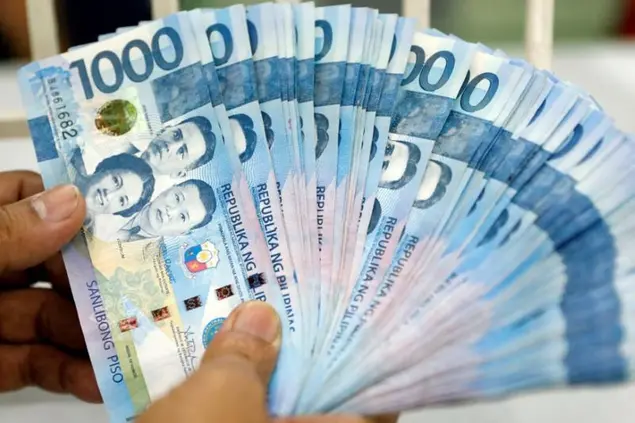PHOTO
The peso is nearing its all-time low of 56.45 to $1 as it shed another 39.1 centavos to close at 56.37, its lowest level in almost 18 years, from Monday's 55.979, on the back of the country's ballooning trade deficit, rising COVID infections and quickening inflation.
Michael Ricafort, chief economist at Rizal Commercial Banking Corp., said the local currency hit an intraday low of 56.45 to $1, matching the all-time low recorded almost 18 years ago.
'The peso exchange rate matched the record low versus the dollar at 56.45 earlier during the day, or the weakest for the peso in nearly 18 years or since Oct. 13, 2004,' Ricafort said.
The local currency opened at an intraday high of 56.13 before losing steam to hit an intraday low of 56.45. It closed at 56.37, the weakest level since the 56.375 to $1 recorded on Nov. 5, 2004.
Trading volume jumped by 72.6 percent to $1.39 billion from $804.6 million on Monday.
'It is interesting to note that back in 2004 to 2005, the high was limited at 56.40 levels for about two years,' Ricafort said.
Ricafort said the peso ended weaker for the fifth day in six trading days amid record trade deficit on a monthly basis at $5.68 billion in May as the growth of imports continued to outpace that of exports.
The chief economist of the Yuchengco-led bank also cited the continued strengthening of the dollar against major global currencies ahead of the release of the inflation data in the US, as well as the hawkish stance of the US Federal Reserve.
Ricafort said local market sentiment was also partly weighed down by the increase in new local COVID cases to 4.5-month highs.
China Bank chief economist Domini Velasquez said the dollar index has been strengthening across major currencies to reach a year-to-date high.
'Continued risk-off sentiment in a volatile global environment drives investors to safe haven currencies such as the US dollar,' Velasquez said.
Velasquez said the worsening trade deficit figures affected sentiments on the peso.
'As the trade deficit is expected to remain wide for the rest of the year, we will likely see a weak peso until the end of the year,' Velasquez said.
ING Bank Manila senior economist Nicholas Mapa said the local currency ended weaker on trade deficit dynamics, as well as the policy dissonance between the Bangko Sentral ng Pilipinas (BSP) and the US Fed.
'The peso weakness may persist until at least one of these is addressed,'' Mapa said.
BSP Governor Felipe Medalla has already signaled an aggressive 50-basis- point rate hike in August to curb rising inflationary pressures.
The Monetary Board already raised interest rates by 50 basis points through back-to-back hikes in May and June to anchor inflationary expectations.
Copyright © 2022 PhilSTAR Daily, Inc Provided by SyndiGate Media Inc. (Syndigate.info).
